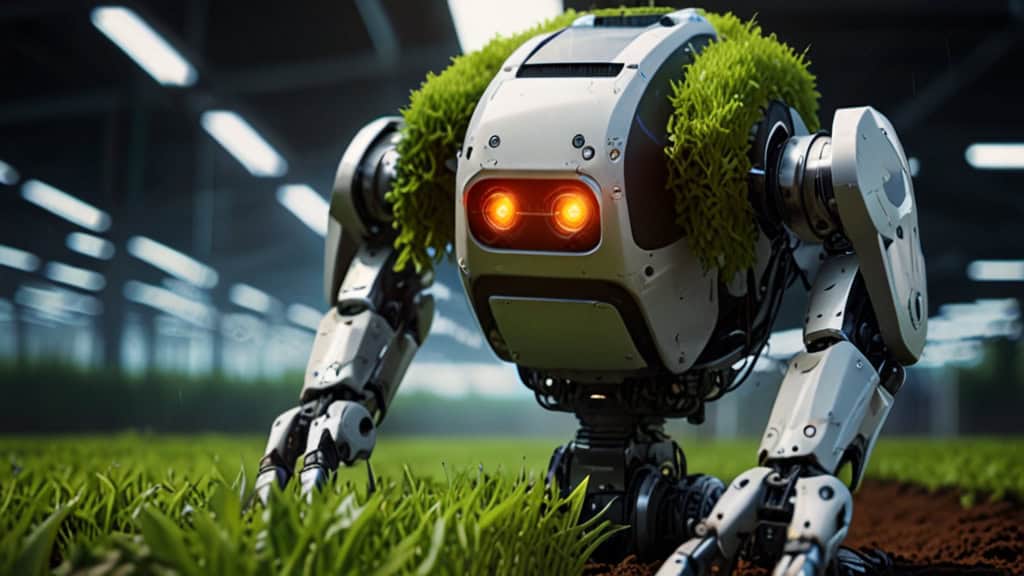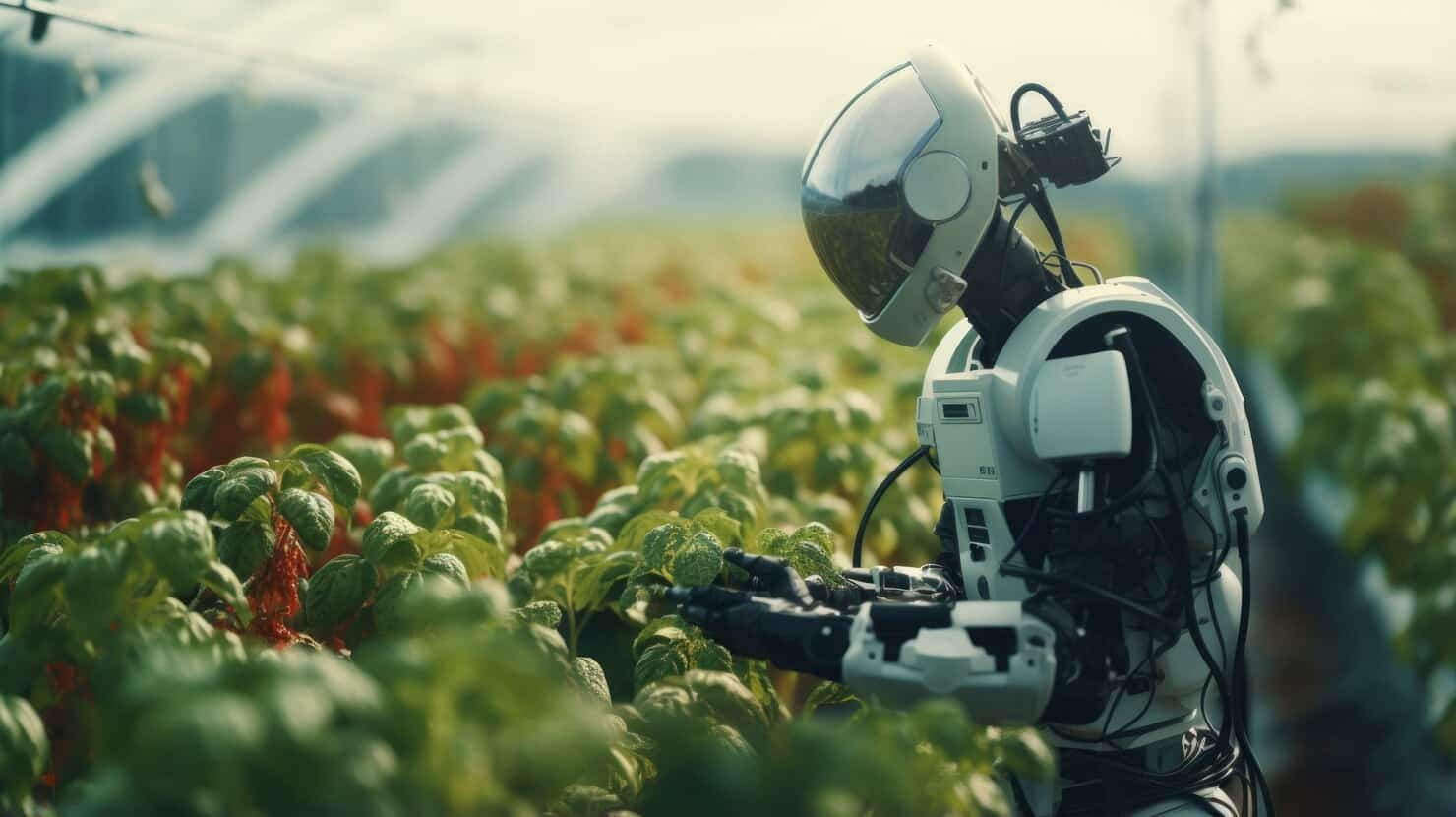In recent years, agriculture has seen a significant transformation with the advent of AI technologies. These advancements are revolutionizing the industry, offering innovative solutions that enhance productivity, efficiency, and sustainability. Smart farmers are increasingly adopting AI to optimize various farming practices, from crop monitoring to supply chain management. This article delves into the best AI technologies in agriculture, providing a comprehensive overview supported by statistics, quotes, and illustrative infographics.
Introduction
The global agricultural landscape is undergoing a profound shift, driven by the integration of AI technologies. As the world’s population continues to grow, the demand for food is increasing, placing immense pressure on agricultural systems. Traditional farming methods are often insufficient to meet this demand sustainably, leading to the need for smart farming solutions. AI agriculture is at the forefront of this transformation, offering tools and techniques that enable farmers to make data-driven decisions, improve yields, and reduce environmental impact.
Current State of AI in Agriculture

AI technologies are being rapidly adopted across the agricultural sector. According to a report by MarketsandMarkets, the AI in agriculture market is projected to grow from USD 1 billion in 2020 to USD 4 billion by 2026, at a compound annual growth rate (CAGR) of 25.5% . This growth is fueled by the increasing need for efficient farming practices, the availability of big data, and advancements in machine learning and computer vision.
Key AI Technologies in Agriculture
1. Precision Agriculture
Precision agriculture is one of the most significant applications of AI in agriculture. It involves the use of AI to analyze data from various sources, such as satellite imagery, weather forecasts, and soil sensors, to make precise decisions about planting, fertilizing, and irrigating crops.
Benefits of Precision Agriculture:
- Optimized Resource Use: AI helps in the precise application of water, fertilizers, and pesticides, reducing waste and lowering costs.
- Enhanced Crop Yields: By analyzing real-time data, AI can predict the best times for planting and harvesting, leading to higher yields.
- Sustainability: Reduced use of chemicals and water contributes to sustainable farming practices.
2. Crop Monitoring and Disease Detection
AI-powered drones and sensors play a crucial role in crop monitoring and disease detection. These technologies provide farmers with real-time information about the health of their crops, enabling early intervention and reducing losses.
Key Features:
- Remote Sensing: AI algorithms analyze data from drones and satellites to monitor crop health and detect anomalies.
- Disease Prediction: Machine learning models can predict the likelihood of disease outbreaks, allowing for timely preventive measures.
- Yield Estimation: AI can estimate crop yields based on various parameters, helping farmers plan better.
3. Automated Irrigation Systems
AI-powered irrigation systems use data from weather forecasts, soil moisture sensors, and crop models to optimize water usage. These systems ensure that crops receive the right amount of water at the right time, enhancing growth while conserving water.
Advantages:
- Water Conservation: Automated systems significantly reduce water wastage.
- Improved Crop Health: Consistent and optimal watering schedules improve crop health and yield.
- Labor Savings: Automation reduces the need for manual irrigation, saving labor costs.
4. Robotics and Automation
Robots equipped with AI capabilities are transforming various farming tasks, from planting and weeding to harvesting. These robots increase efficiency and reduce the reliance on manual labor, addressing labor shortages in the agriculture sector.
Key Applications:
- Planting and Weeding: Robots can plant seeds and remove weeds with precision, improving crop management.
- Harvesting: AI-powered harvesters can pick fruits and vegetables, ensuring minimal damage and high efficiency.
- Sorting and Packaging: Robots can sort and package produce, enhancing post-harvest processing.
5. AI-Driven Supply Chain Management
AI technologies are optimizing supply chain management in agriculture, ensuring that produce reaches consumers efficiently. AI can predict demand, optimize logistics, and reduce food waste.
Benefits:
- Demand Forecasting: AI algorithms analyze market trends and consumer behavior to predict demand accurately.
- Logistics Optimization: AI optimizes transportation routes and schedules, reducing costs and emissions.
- Reduced Food Waste: By predicting demand and optimizing supply chains, AI helps in reducing food wastage.
Case Studies and Real-World Applications
Case Study 1: John Deere’s Precision Agriculture
John Deere, a leading manufacturer of agricultural machinery, has integrated AI into its equipment to enhance precision agriculture. Their AI-driven tractors and combines use machine learning to analyze field data and optimize farming practices. According to John Deere, farmers using their AI technologies have reported a 15% increase in crop yields and a 20% reduction in resource use .
Case Study 2: Blue River Technology’s Weeding Robots
Blue River Technology, a subsidiary of John Deere, has developed AI-powered weeding robots that use computer vision to identify and remove weeds precisely. These robots have significantly reduced the use of herbicides, lowering costs and environmental impact. Farmers using Blue River’s technology have seen a 90% reduction in herbicide usage .
Case Study 3: IBM’s Watson Decision Platform for Agriculture
IBM’s Watson Decision Platform for Agriculture leverages AI to provide farmers with insights into weather patterns, soil conditions, and crop health. This platform has helped farmers make informed decisions, leading to a 25% increase in crop yields and a 30% reduction in water usage .
Infographic: AI in Agriculture at a Glance
| AI Technology | Key Benefits | Real-World Impact |
|---|---|---|
| Precision Agriculture | Optimized resource use, enhanced yields | 15% increase in yields, 20% reduction in resource use (John Deere) |
| Crop Monitoring | Early disease detection, yield estimation | 90% reduction in herbicide usage (Blue River Technology) |
| Automated Irrigation | Water conservation, improved crop health | 30% reduction in water usage (IBM Watson) |
| Robotics and Automation | Increased efficiency, labor savings | Higher efficiency in planting, weeding, harvesting (Various) |
| AI-Driven Supply Chain | Demand forecasting, logistics optimization | Reduced food waste, optimized logistics (Various) |
| Year | Market Size (USD Billion) |
|------|---------------------------|
| 2020 | 1.0 |
| 2021 | 1.25 |
| 2022 | 1.56 |
| 2023 | 1.95 |
| 2024 | 2.44 |
| 2025 | 3.05 |
| 2026 | 4.00 |
By incorporating these advanced technologies, AI agriculture is set to revolutionize the farming industry, making it more efficient, sustainable, and productive. Smart farmers who adopt these technologies will be at the forefront of this agricultural transformation, ensuring a secure and prosperous future for global food production.
Quote
“AI in agriculture is not just about automating tasks; it’s about making informed decisions that lead to sustainable and efficient farming practices.”
– John Deere
Challenges and Future Prospects
While AI agriculture holds immense potential, several challenges need to be addressed:
1. Data Privacy and Security
The increasing use of data in agriculture raises concerns about privacy and security. Farmers need assurance that their data is protected and used ethically.
2. High Initial Costs
The adoption of AI technologies often involves significant upfront costs, which can be a barrier for small-scale farmers. Ensuring affordability and accessibility is crucial for widespread adoption.
3. Need for Training and Education
Farmers need to be trained to use AI tools effectively. Providing education and support will be essential in ensuring that farmers can leverage AI technologies to their full potential.
Future Prospects
The future of AI agriculture looks promising, with continuous advancements in technology. Emerging trends such as the Internet of Things (IoT), blockchain, and 5G connectivity are expected to further enhance AI applications in agriculture. These technologies will enable even more precise and efficient farming practices, leading to greater sustainability and productivity.
Conclusion
AI agriculture is revolutionizing the way we grow food, offering smart farmers innovative solutions to tackle the challenges of modern farming. From precision agriculture and crop monitoring to automated irrigation and supply chain management, AI technologies are driving efficiency, sustainability, and profitability in the agricultural sector. As we look to the future, the continued integration of AI in agriculture promises to address global food security challenges and create a more sustainable farming ecosystem.
By embracing AI agriculture, farmers can not only enhance their productivity and profitability but also contribute to a more sustainable and resilient agricultural system. The journey towards smart farming is just beginning, and the potential for AI to transform agriculture is limitless.
References
- MarketsandMarkets. (2020). AI in Agriculture Market. Retrieved from MarketsandMarkets.
- John Deere. (n.d.). Precision Agriculture. Retrieved from John Deere.
- Blue River Technology. (n.d.). Weeding Robots. Retrieved from Blue River Technology.
- IBM. (n.d.). Watson Decision Platform for Agriculture. Retrieved from IBM.

